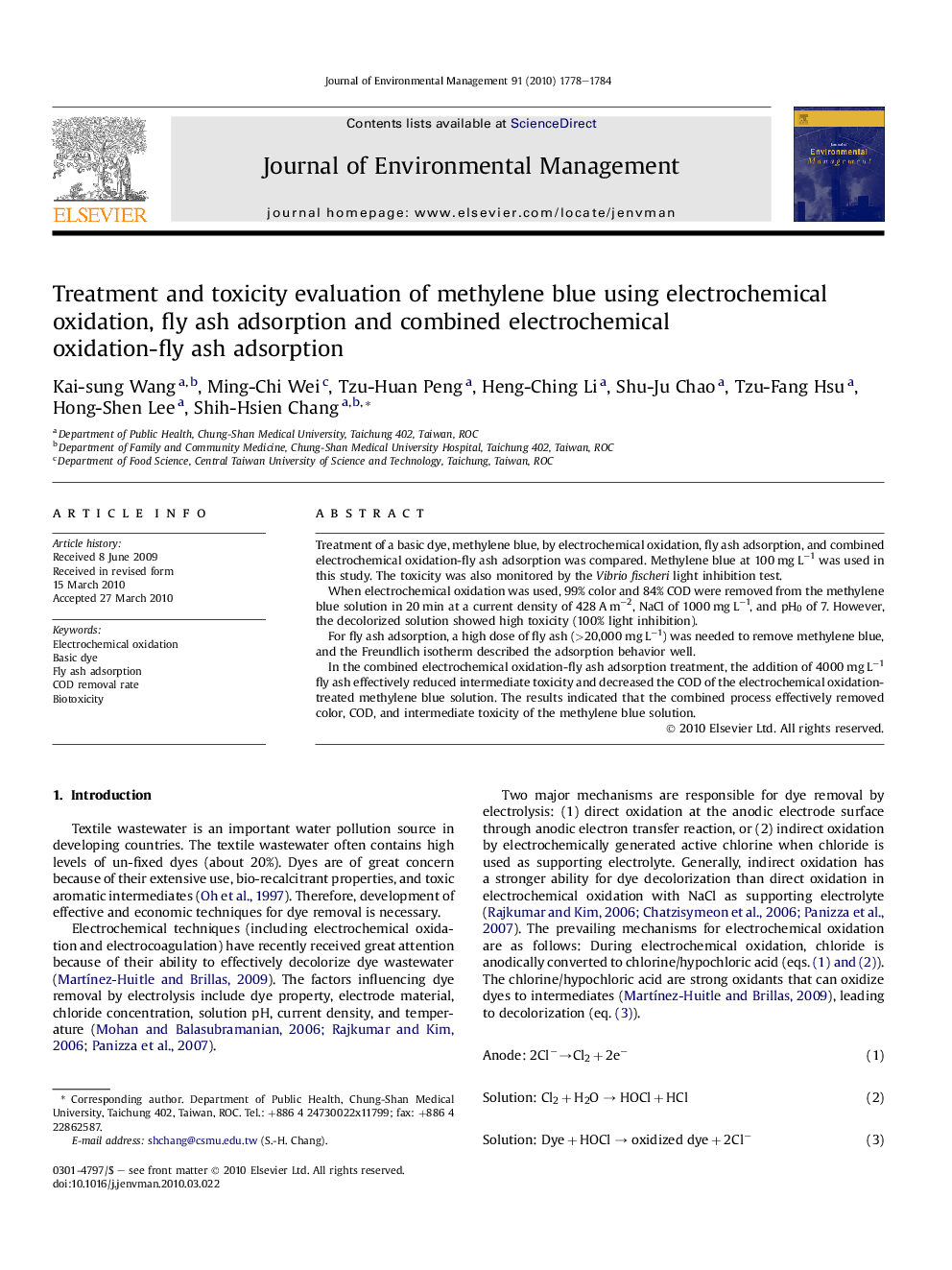| Article ID | Journal | Published Year | Pages | File Type |
|---|---|---|---|---|
| 1057140 | Journal of Environmental Management | 2010 | 7 Pages |
Treatment of a basic dye, methylene blue, by electrochemical oxidation, fly ash adsorption, and combined electrochemical oxidation-fly ash adsorption was compared. Methylene blue at 100 mg L−1 was used in this study. The toxicity was also monitored by the Vibrio fischeri light inhibition test.When electrochemical oxidation was used, 99% color and 84% COD were removed from the methylene blue solution in 20 min at a current density of 428 A m−2, NaCl of 1000 mg L−1, and pH0 of 7. However, the decolorized solution showed high toxicity (100% light inhibition).For fly ash adsorption, a high dose of fly ash (>20,000 mg L−1) was needed to remove methylene blue, and the Freundlich isotherm described the adsorption behavior well.In the combined electrochemical oxidation-fly ash adsorption treatment, the addition of 4000 mg L−1 fly ash effectively reduced intermediate toxicity and decreased the COD of the electrochemical oxidation-treated methylene blue solution. The results indicated that the combined process effectively removed color, COD, and intermediate toxicity of the methylene blue solution.
